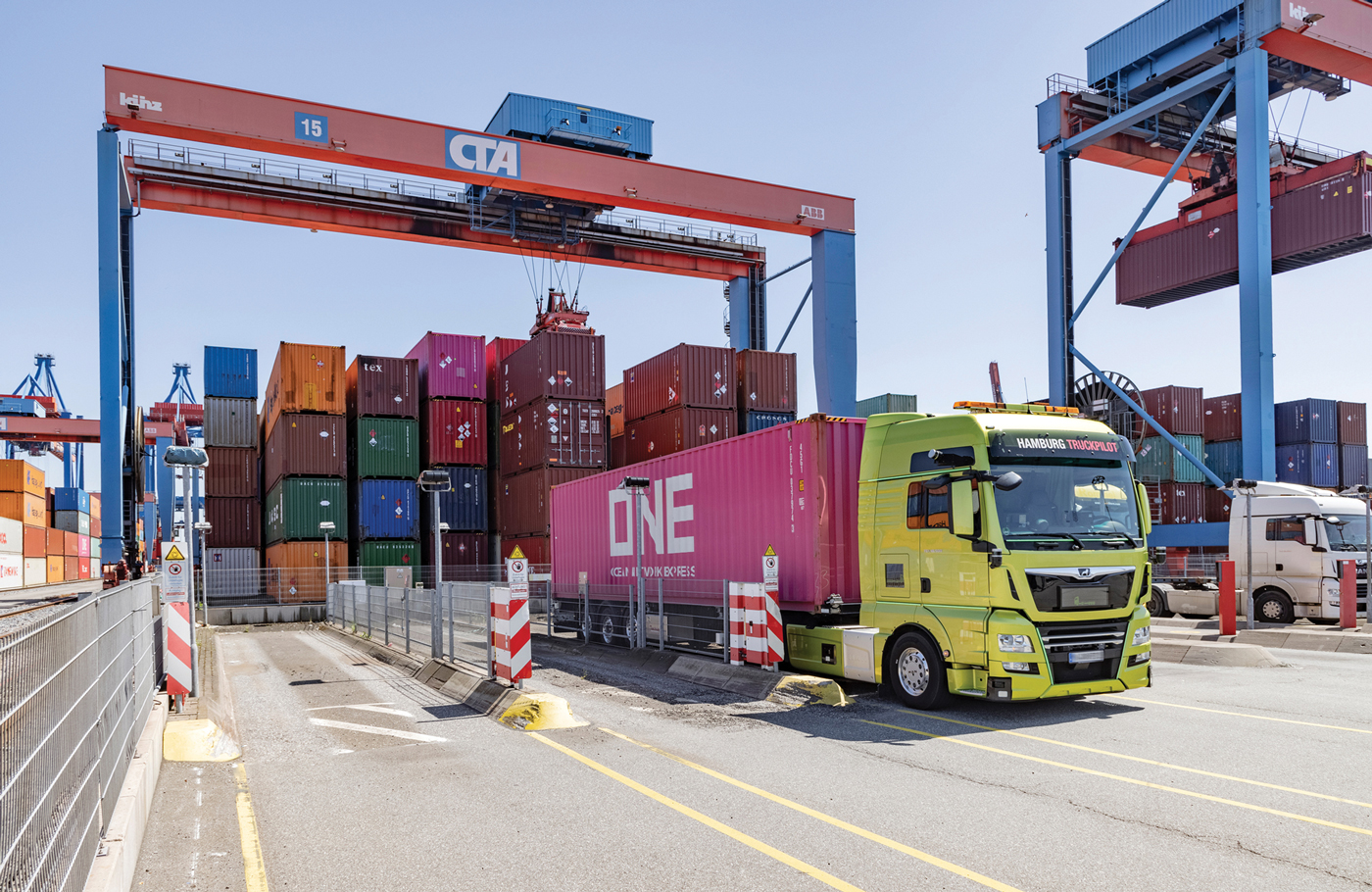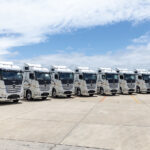REVEALED: the world’s first zero-emission port
REVEALED: the world’s first zero-emission port
Automated and electrified processes have paved the way for the Container Terminal Altenwerder (CTA) – operated by Hamburger Hafen und Logistik AG (HHLA) – to become the world’s first container terminal to receive climate-neutral certification. SUSANNE THEISSEN took a tour through the extraordinary Hamburg quays.
The quays are also the venue for the Hamburg TruckPilot project organised jointly by MAN and HHLA to test the deployment of autonomous trucks at a container terminal. While many ports have grown over the centuries, the CTA was built on a “greenfield” site. HHLA made full use of this opportunity: numerous computer simulations were conducted well before the ground-breaking ceremony to test and optimise the equipment and processes for the freight terminal. The result is a clearly structured, compactly designed, highly digitalised hub with short routes for the climate-neutral transhipment of goods from all over the world.
3 000-plus vessels dock
Peak periods? No problem for the CTA. Up to four container ships at a time can be unloaded or loaded at its 1 400-metre quay wall. Every year, more than 500 large and about 1 600 smaller container ships as well as more than 1 000 barges dock here.
The port’s 14 giant gantry cranes, each weighing 2 000 tonnes and operated completely using green electricity, make light work of loading and offloading the ships. Each of them has two so-called “trolleys” to which the containers are attached in order to move them on or off the ships.
The next station is an elevated working gantry. The containers are set down and then checked and recorded by personnel in the gantry supervision cabin. After that, the loading process continues fully automatically: once a driverless automated guided vehicle (AGV) has made itself available on the land side of the gantry, a gantry trolley sets the container down on the AGV.
The CTA has about 90 automated vehicles that serve as a link between the gantry cranes and the container storage lanes. These AGVs independently find the quickest route. Software developed by HHLA evaluates the signals from more than 19 000 transponders embedded within the AGV deployment area and can thus determine the exact positions of the vehicles and steer them via radio signal. Safety reasons dictate that people are not permitted to enter the AGV deployment area.
The computer-controlled AGVs independently supply themselves with energy. Almost two-thirds of the fleet is equipped with battery-powered drives and runs on green electricity, the remaining third currently still runs via diesel-electric drives. The plan is for all of the AGVs to be equipped with rapid-charging lithium-ion batteries by the end of 2022.

Electrifying times
The beginning of 2019 at the CTA saw the launch of the FRESH research project, which is further developing the AGVs into mobile electricity storage devices. This involves the vehicles either receiving surplus energy from the electricity grid at the charging station or returning it in the event of shortfalls, which enables the balancing of weather-related fluctuations in renewable energy supplies.
Once a container is loaded on the AGV, it drives to the adjacent container storage area. It consists of 26 storage blocks each containing ten lanes. Every block has two gantry trolleys. These rail-guided double rail-mounted gantry cranes operate automatically – even at night. This means that there is generally no need for lighting at the container storage area. This contributes to the climate-neutrality at HHLA’s CTA. It saves as much electricity as 500 four-person households consume per year. Light-emitting diodes are used where light is still required; they consume less energy at the same luminous intensity.
Maximum efficiency
The two double rail-mounted gantry cranes operate independently of one another. This enables simultaneous service to AGVs on the water side and trains or trucks on the land side, which are waiting to transport goods inland. The cranes are different sizes to prevent them from blocking each other. Software keeps things organised to ensure that containers are rapidly available. It rearranges the storage blocks during quiet periods.
Containers that are to be collected by truck on the land side are handled manually. Employees place the steel containers onto the truck using a joystick and a camera. Should onward transport be via rail, then tractor units transfer the containers to the terminal’s own container railway station – which is the busiest in all of Europe.
These tractor units are currently still diesel-powered. But the testing of electric tractor units at the HHLA CTA is proceeding swiftly. HHLA offsets CO2 emissions that still arise from such processes today through climate protection projects, for example for reforestation of the rainforest in Panama.
Hybrid locomotives smile on the planet
The terminal station connects the HHLA CTA to the German rail network with nine parallel and 700-metre-long tracks. Four electrified and rotating gantry trolleys deal with the loading and unloading of the trains. This is also where the world’s first hybrid locomotives are advancing eco-friendliness at the CTA. They emit up to 50% less CO2 and up to 70% less nitrogen dioxide. These innovative locomotives can also reduce their fuel consumption by up to 50% by maximising their battery-electric operation.
Since the end of 2018, MAN Truck & Bus and HHLA have been expediting their “Hamburg TruckPilot” research and testing project relating to the development of automation solutions.
This project is on track and, in May 2021, a prototype truck with real container cargo steered independently across the terminal site for the first time. It used its many built-in sensors and cameras to navigate independently and safely across the terminal and park precisely in the container storage lane. The ultimate objective is automated hub-to-hub traffic, driverless from start to finish. This joint project with HHLA at the CTA was a significant step towards achieving this. Many more will follow.
Published by
Focus on Transport
focusmagsa




